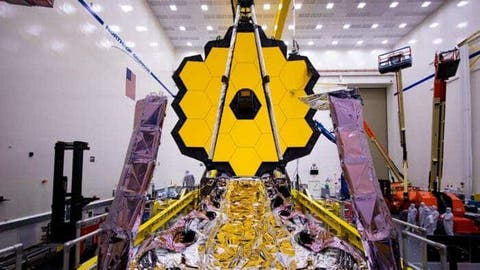NASA’s James Webb Space Telescope was calibrated on April 28. After a thorough review, the Webb Space Telescope’s four science instruments were able to capture sharp, well-focused images. The James Webb Space Telescope is about to undergo commissioning of scientific instruments, a process that will take about 2 months. After this process, it will officially commence scientific operations. First, the Webb Space Telescope is “fully calibrated” meaning that each instrument can now begin collecting more light from space.
In this image, each engineering drawing shows one of Webb’s instruments “perfectly aligning and in focus” with the telescope. Of course, what we see in the picture is actually part of the Large Magellanic Cloud, which is just a small irregular galaxy in the Milky Way.
The size and position of the images represent the relative arrangement of each instrument in the plane that Webb’s telescopes focus on. You may find that the “stars” that each instrument points at skew relative to the rest.
Just like the previous drawing, the red background of this “mosaic” is to optimize the display and enhance the contrast. It’s worth mentioning that the colours in space telescope images sometimes show what the eye actually sees. However, it also sometimes shows their “enhanced” characteristics.
The imaging instruments installed on Weber are NIRCam, NIRISS and MIRI. According to reports, the MIRI sees “mid-infrared light” rather than “near-infrared light” like others. Thus, you can see interstellar clouds and brilliant starlight in its images!. The other NIRSpec is a spectrometer rather than an imager. However, it can also take images for calibration and target acquisition.
Telescope calibration set for the seventh and final stage
By the way, some friends may be curious about what the “black belt” in the picture is. This is mainly due to the unique design of its micro-shutter array structure. It is similar to a miniature shutter, which is why it can capture 100 data points of an object at the same time.
The part tied to NIRISS is Webb’s Fine Guidance Sensor (FGS), which precisely tracks “guide stars” to point the observatory more precisely. It also has two sensors but is usually not for scientific imaging. Generally, it just takes calibrated images.
The telescope’s optical performance continues to outperform the engineering team’s most optimistic predictions. From this point on, the only changes to the mirror will be very small, regular adjustments to the primary mirror segment.
In Webb’s next and final step, instrument calibration, the dedicated tools for each instrument (masks, filters, lenses, etc.) will be configured and operated in various combinations. This will allow us to confirm that they are ready for scientific operations this summer.
According to NASA, Webb’s next phase, the seventh and final phase, will be an “instrument calibration” phase. In this phase, each instrument and its specialized tools (masks, filters, lenses, etc.) will be available in various combinations.
